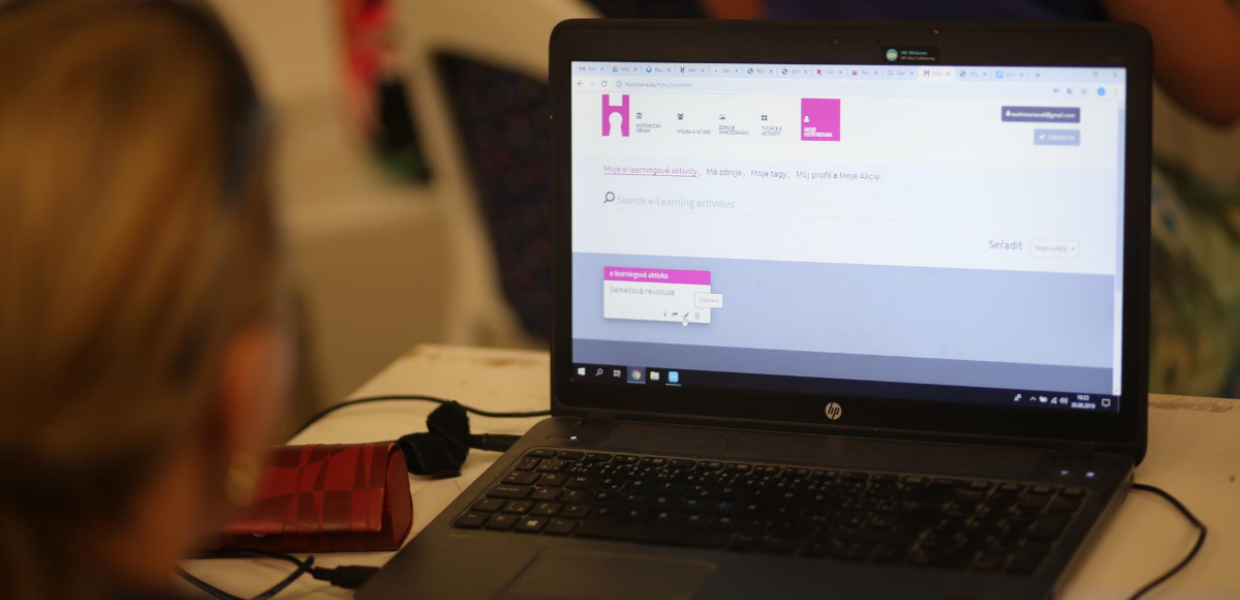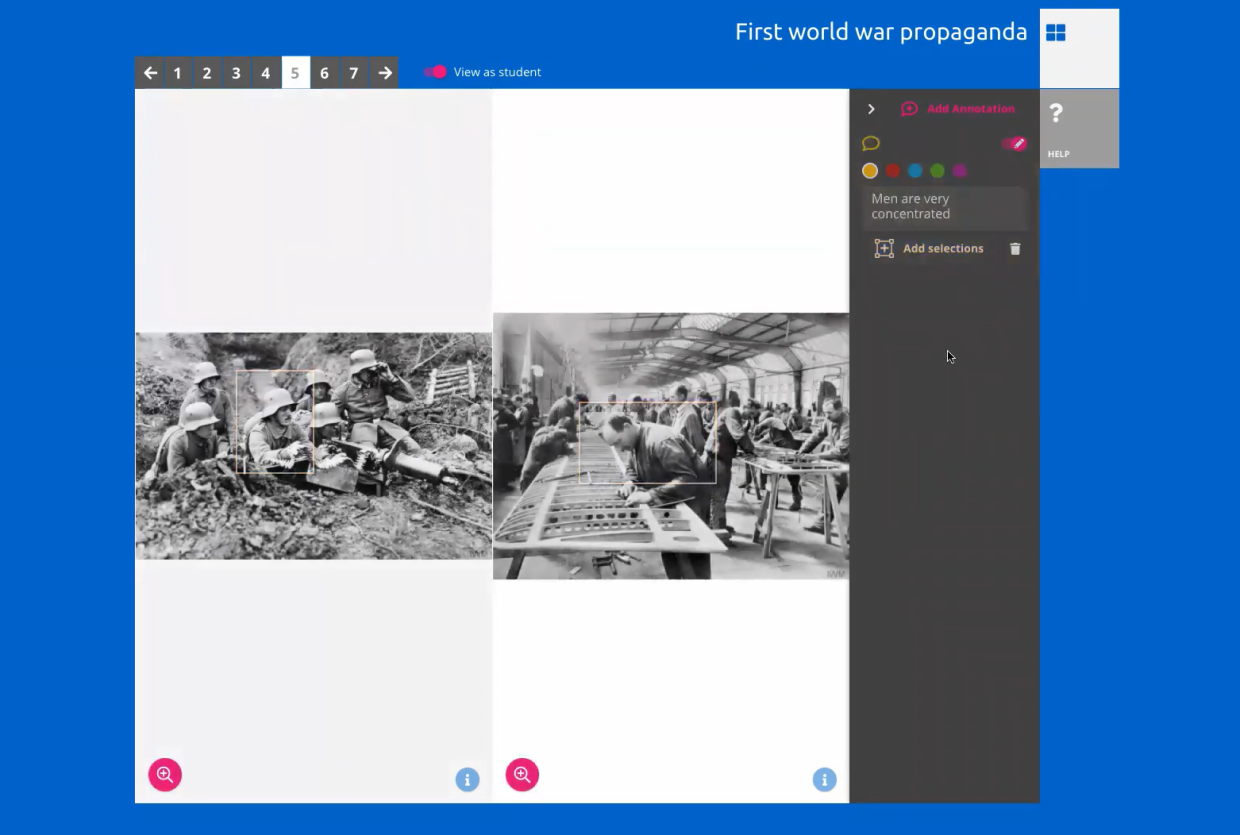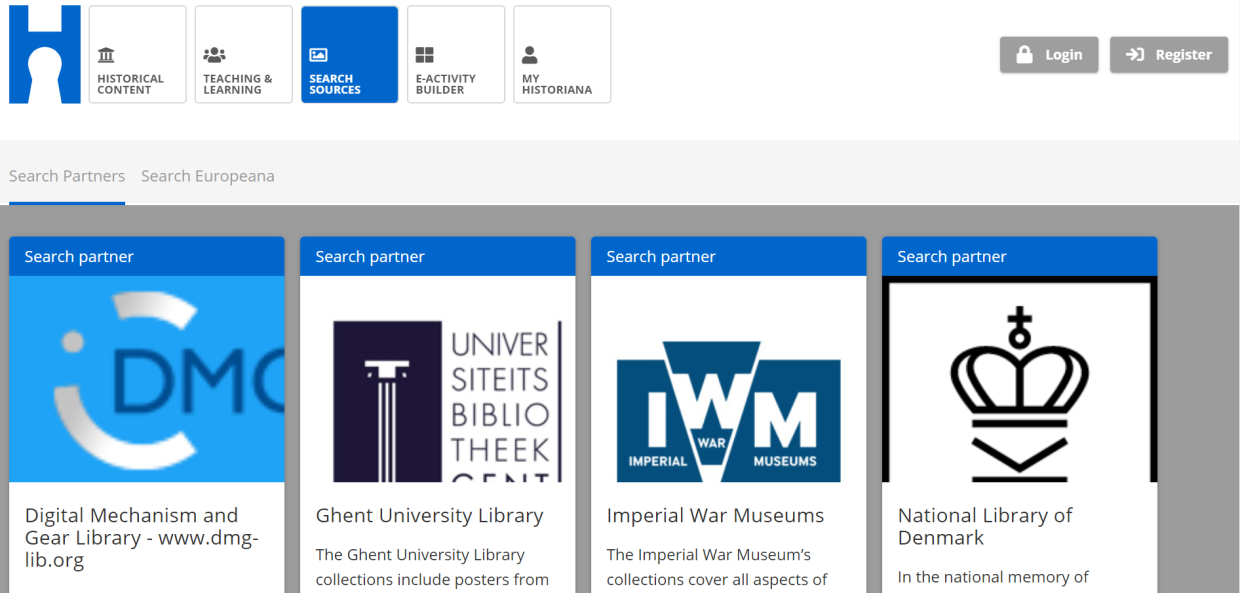Each building block is designed to support students to think critically by interacting with historical sources. The ‘compare’ block encourages them to compare and contrast visual sources, the ‘highlight’ block invites them to analyse texts, and the ‘discovery’ block is designed for students to make connections between sources.
The development of each tool was led by a different project partner: the Museum of Slavonia has led the development of the ‘compare’ block, Stockholmskällan has led the development of the ‘highlight’ block, and the Institute for the Study of Totalitarian Regimes has led the development of the ‘discovery' block.
New features for educators - reviewing student answers
As part of the project, we also developed a way for teachers to review the answers students give for each eLearning Activity - a feature often requested by educators who work with Historiana. Depending on the building block, teachers can review student annotations, highlights, comments, source placements and written answers.
Teachers can either look at the all answers of one student or the answers of all students in one specific block. They can also see the answers of students who started the activity, but did not finalise and submit it. This makes it easier and quicker for educators to assess the work of their pupils, and offers a flexible review process.
Teachers can add tags to the link that they create when sharing an eLearning Activity with students that indicates the class or year. This way they can use the same eLearning Activity with different groups over different years. The option to filter these links by class and/or year helps the teachers to find the right link and the right answers.
Building partnerships
Within the Opening Up Historiana project, we also wanted to enable more people and organisations to benefit from and contribute to Historiana. We specifically wanted to engage programmers in the design of Historiana, and to work directly with cultural heritage institutes who have digital collections.




